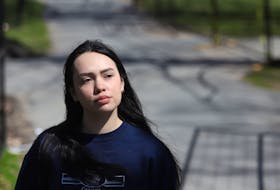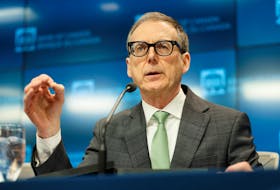On Tuesday evening, the Duke and Duchess of Cambridge were photographed stepping out of a colourful rickshaw for a formal reception in Islamabad. Kate Middleton was clad in a Western-style green gown, while Prince William eschewed suit-and-tie for a dark teal sherwani, a traditional Pakistani outfit.
The photo made headlines as the media and public lauded the couple for its sense of style and efforts to boost local designers. However, when Prime Minister Justin Trudeau and Sophie wore traditional outfits at an event with Bollywood celebrities during their India trip, they were lambasted for going overboard and ridiculed by the public.
The contrast between public reaction to the royals’ traditional wear and the Trudeaus in 2018 has been consistent — the former are praised, the latter condemned.
The fault may not entirely lie with the Trudeaus’ sense of style. South Asian designers in Canada and a former Indian ambassador say that the political status of the Trudeaus, alongside differences between the Indo-Canadian and U.K.-Pakistan political relations could have added to the mix.
“As an Indian person, I appreciated the Trudeau family’s effort to pay respect to Indian culture and I think they showed a lot of love” said Anu Raina, a Toronto-based designer. However, from a professional point of view, the wardrobe could have been better vetted beforehand.
“The colours were too bold,” she said. “And no one wears a sherwani or a brocade sherwani all the time.”
Media reports criticized the Trudeaus for overdressing during their trips and choosing outfits akin to those worn by an Indian bride and groom. One Twitter user described their penchant for family colour co-ordination as a “choreographed cuteness”, remarking that it was a “a bit much.”
“I would have recommended a classier look, simpler fabrics and something that would show their personality with a hint of India,” Raina said. “You don’t have to wear all the culture on your clothes.”
The Duke and Duchess on the other hand, did a better job of blending in with their host country. “You can tell there’s a designer’s touch,” said Raina. “There’s a lot of thought behind (the outfits) and the country, the culture, everything has been taken into account.”
The choice to wear Pakistani colours at the formal reception was an especially “politically correct” move, she added.
Although India and Pakistan are separate countries, they share a long cultural history and subsequently, a great deal of overlap in religious customs, foods and traditional clothing.
Despite the Trudeau’s fashion gaffes, Raina believed the criticism they garnered was unfair. “They shouldn’t have been criticized,” she said. “India is a bold country and people wear bold colours on the street. They really made an effort to blend into Indian culture.”
Sandy Gill, who has styled celebrities like Hasan Minhaj, believes the criticism received by the Trudeaus was inevitable. “If he had just worn suits, they would have been criticized for not taking part in the culture, or if they picked different outfits, colours — I truly think somebody would have found something wrong,” she said. “His job is to win people over so people are going to be looking at him. That’s not necessarily the case with the Duke and Duchess.”
Rajiv Bhatia, a former Indian ambassador who also served as Consul General of Toronto, said simmering tensions between the Indian and Canadian government during the visit could have added to the media criticism.
“There was a great deal of expectation for that visit,” said Bhatia, “for the simple reason that the relationship was going very well (at the time).”
However, Trudeau treated the visit with “sartorial diplomacy,” which complicated the Indo-Canadian relationship, he explained.
“There was a considerable delay in scheduling the visit of Trudeau because it was well into Modi’s first term (as prime minister of India). And the second factor was the way the visit was designed. It gave the impression that the main people being addressed were Canadians back home more than the people in India.”
He added that the Liberal administration had also disrespected India’s protocol when it comes to hosting foreign visits. Trudeau’s schedule had him travel around the country — Agra, Ahmadabad, Mumbai and Amritsar — before he was formally received in New Delhi, the national capital.
“India’s protocol is that the prime minister visit Delhi first but the Canadians chose to reverse that order,” he said.
Finally, Trudeau’s perceived endorsement of the Sikh separatist movement by the Indian government, marked by the invitation of convicted attempted murderer Jaspal Atwal to a formal dinner by the Canadian High Commissioner was the final nail in the coffin, he explained.
The political significance of the Duke and Duchess’s visit to Pakistan, which is rocked by domestic turmoil, paints a different picture. “The visit of the British royals comes as a godsend to Pakistan,” he said. “It gives them a clear signal that they are not without friends in the West.”
What if the royal couple were to visit India in the future? “If it is done in balance,it would be taken positively,” he said. “It would be taken as a signal that the British, who are in doldrums thanks to Brexit, are trying to connect to the people of India.”
Copyright Postmedia Network Inc., 2019








